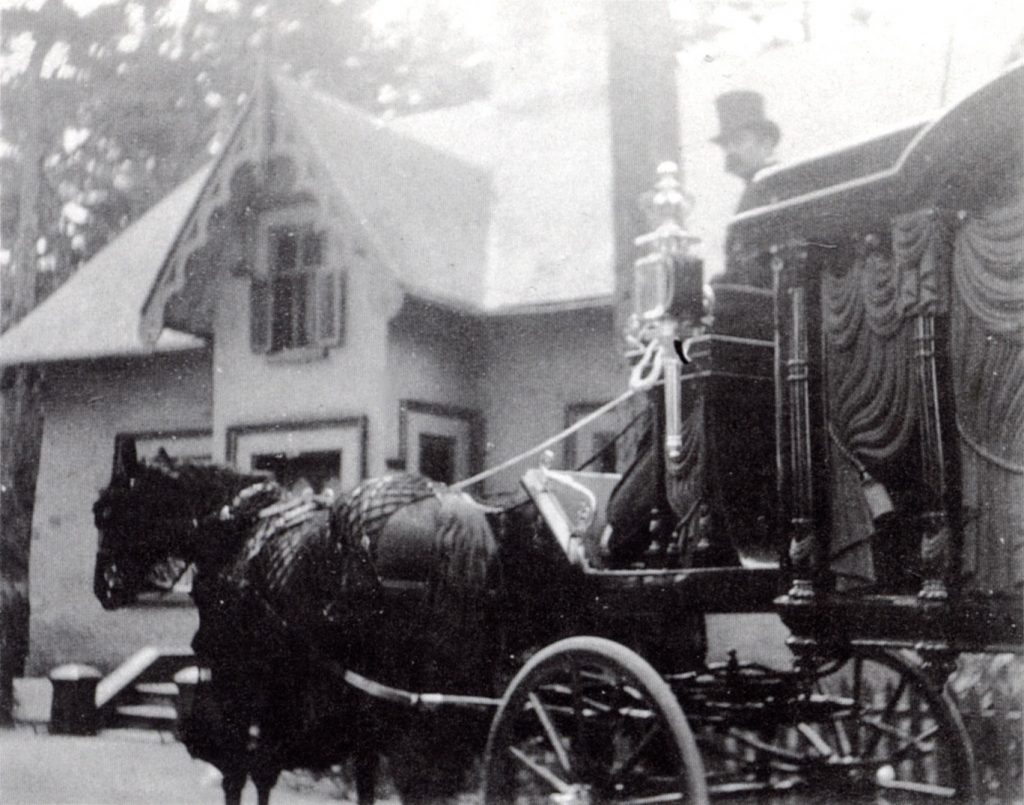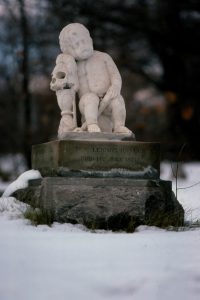Funeral Rites
A funeral service in the 19th century was nothing like it is today. A horse-drawn hearse would lead the funeral procession, followed by carriages for the family and flower carts. It was quite a spectacle to see the whole cortege on the main road from Old Quebec. People would often tip their hats and bow their heads in respect.
Conditions were somewhat different in the 19th century as people often died at a very young age, so their rite of passage had a different meaning than today. Many died at that time for health reasons, pandemics, childhood diseases, wars, and poor living conditions.
Brian’s Memories: Funeral Rites (captions available in both FR and ENG) – View the video with a transcript.
Temple Family’s Headstone
The Temple family’s burial statue is a vivid expression of the anguish and pain that many families suffered from the loss of their children. In less than ten years, Major Henry Temple and his wife Geraldine Sewell lost four of their babies to health issues.
This marble statue represents a young baby leaning on a human skull, which is sitting on an hourglass. The child also has an extinguished “torch of life” between his legs.



